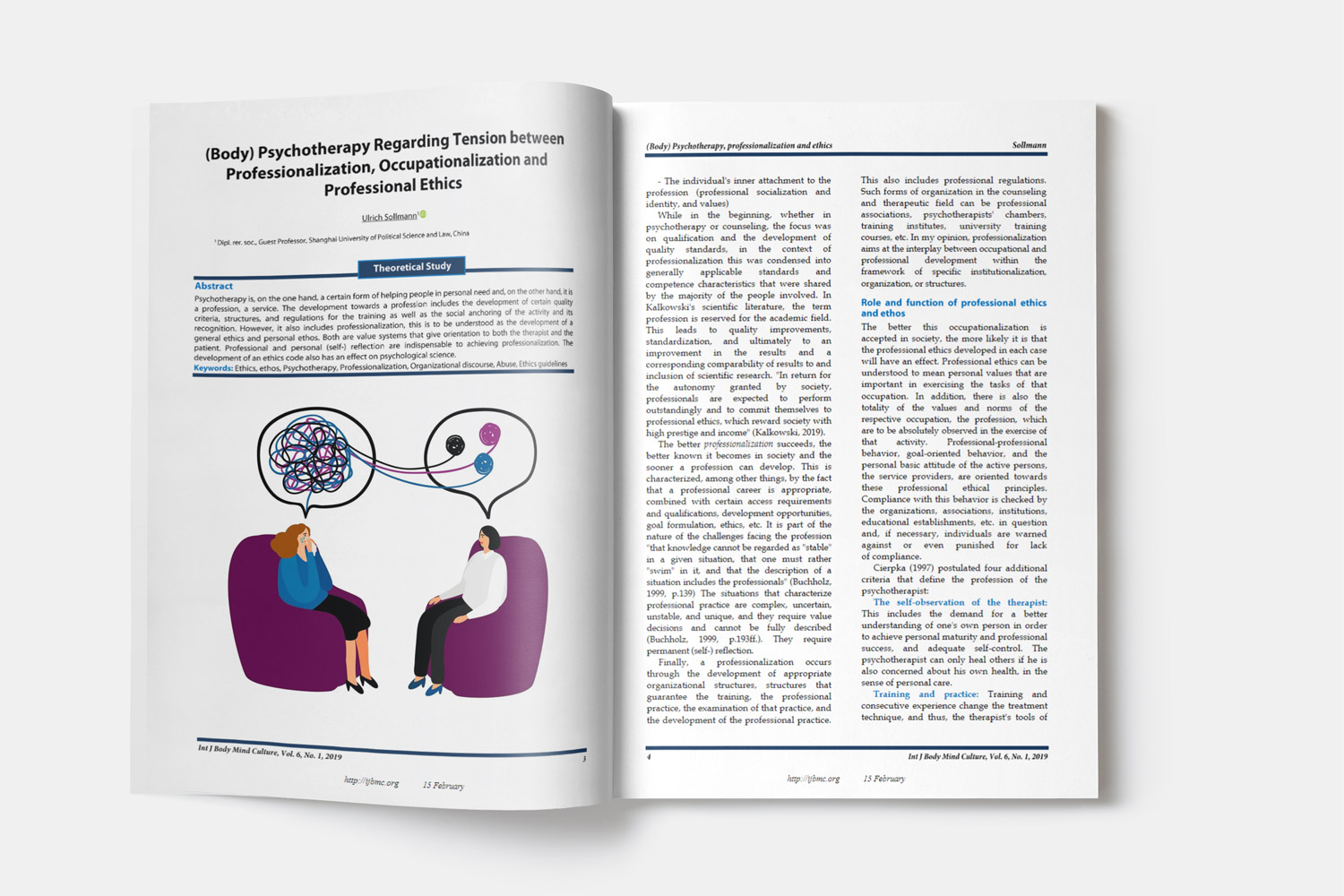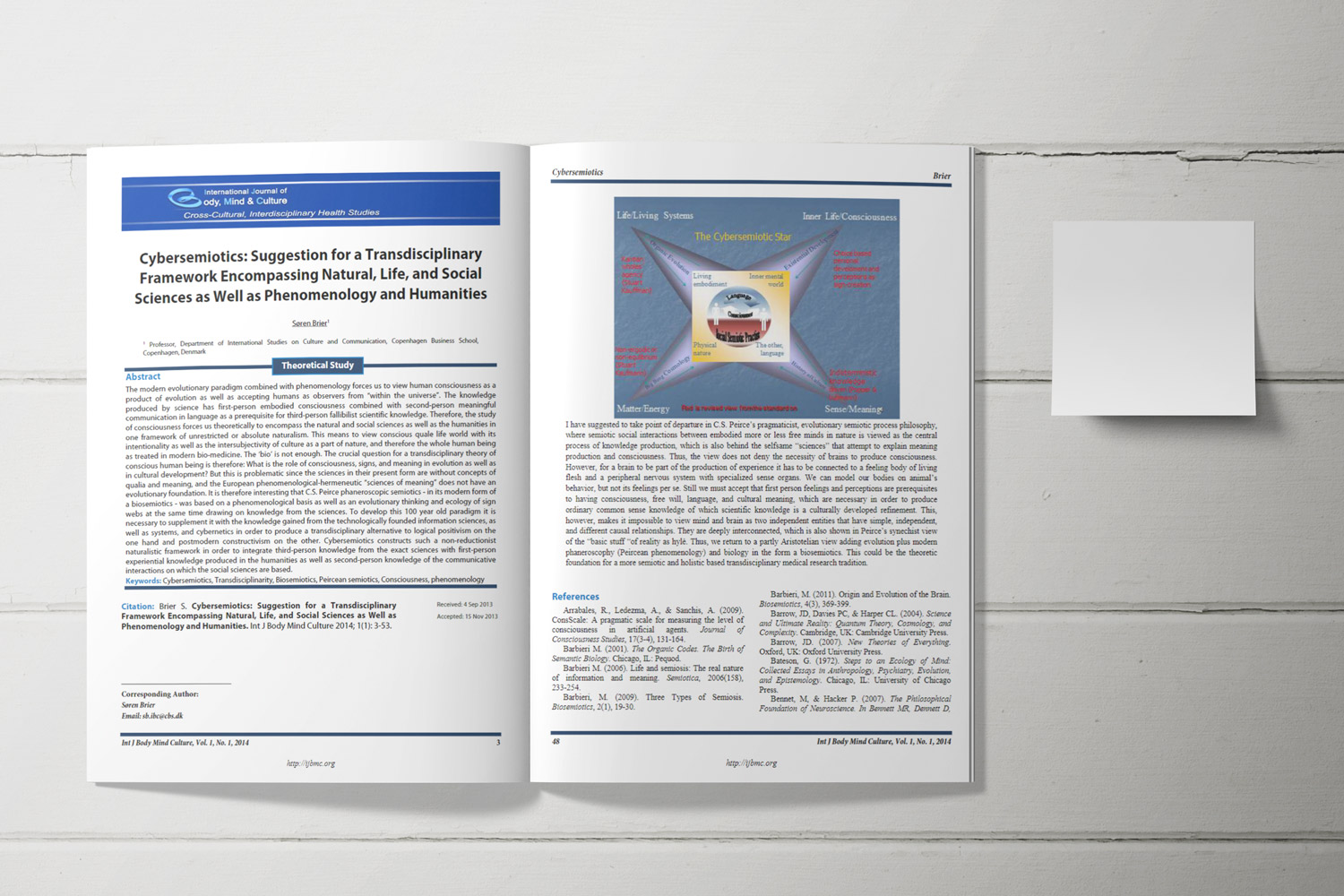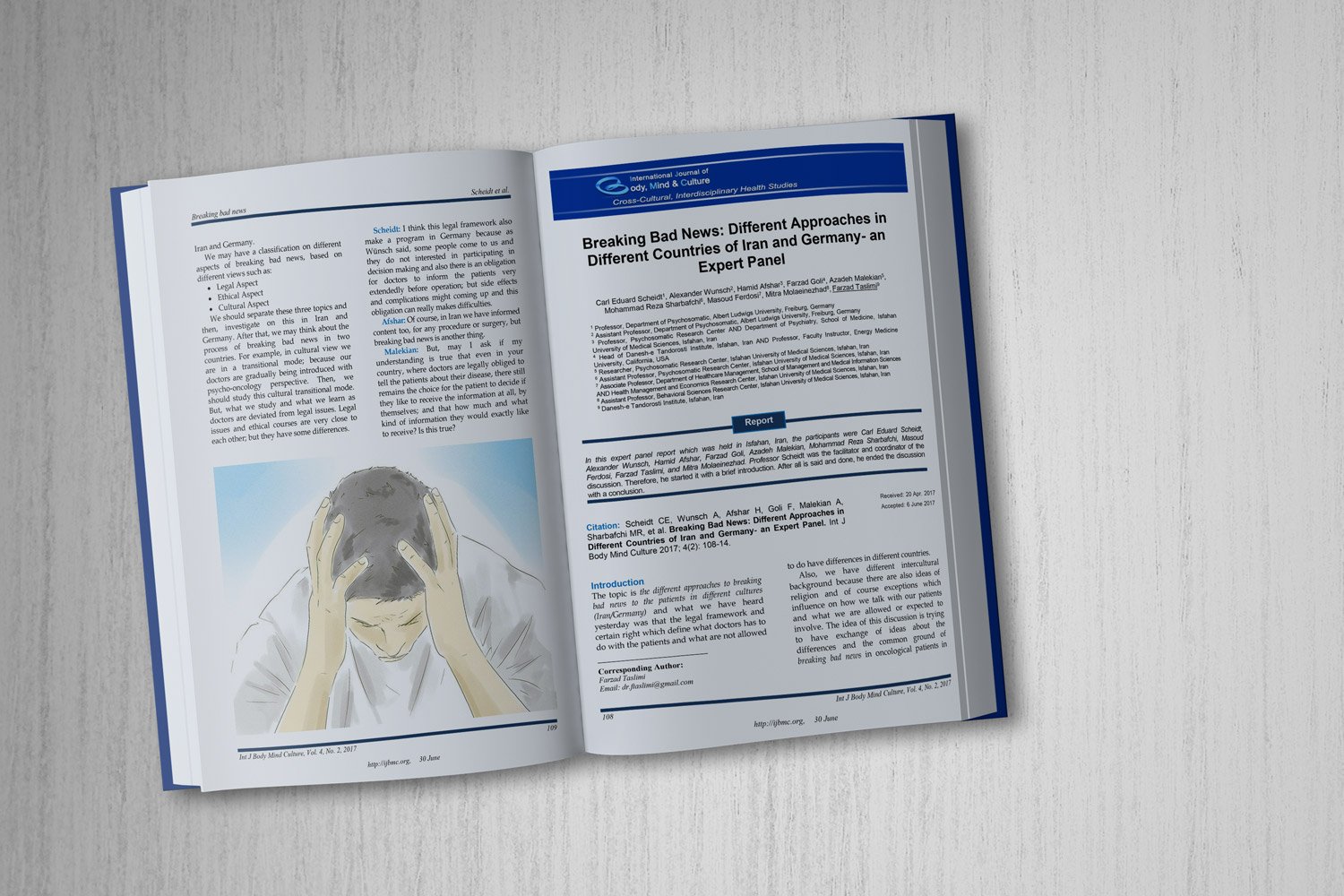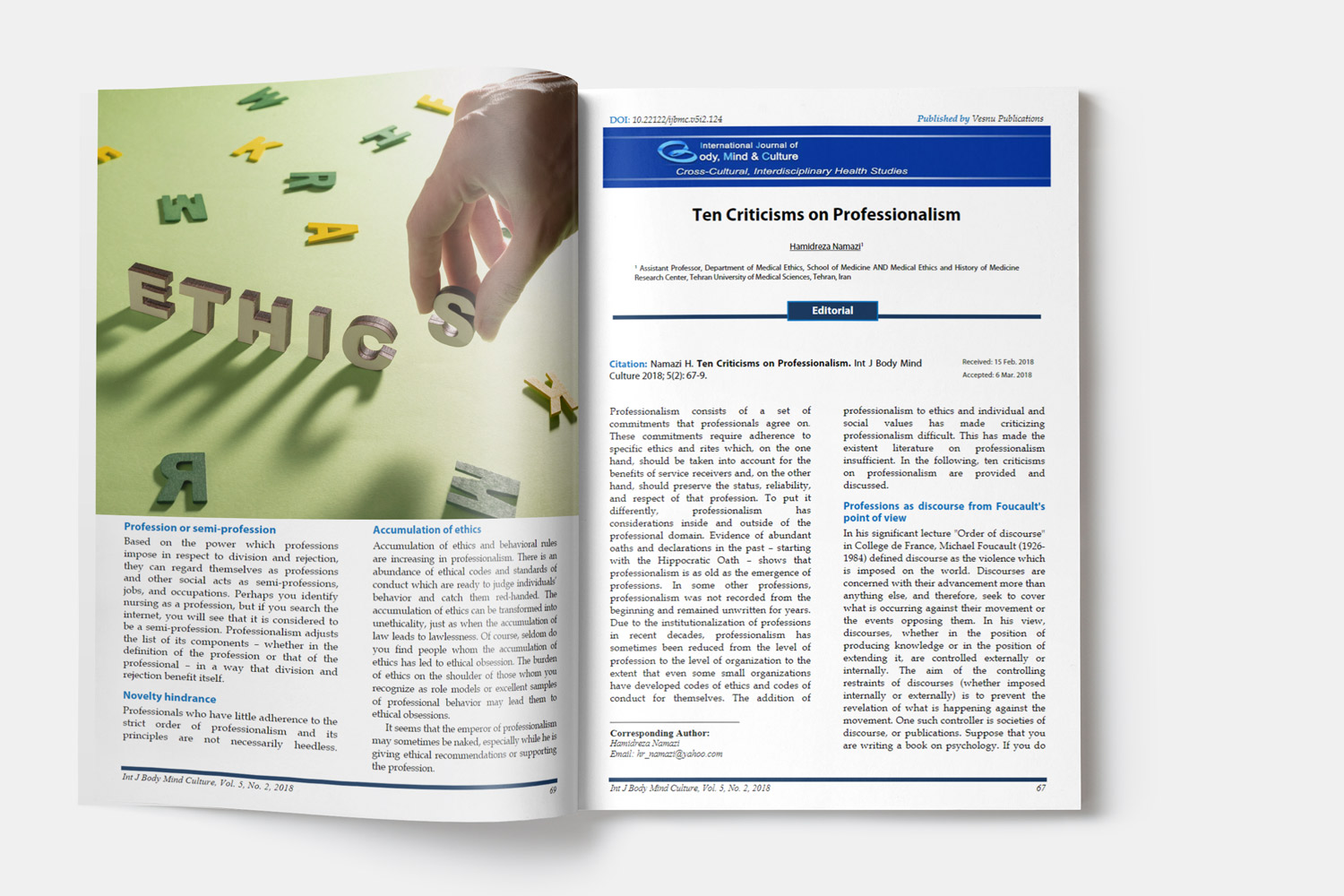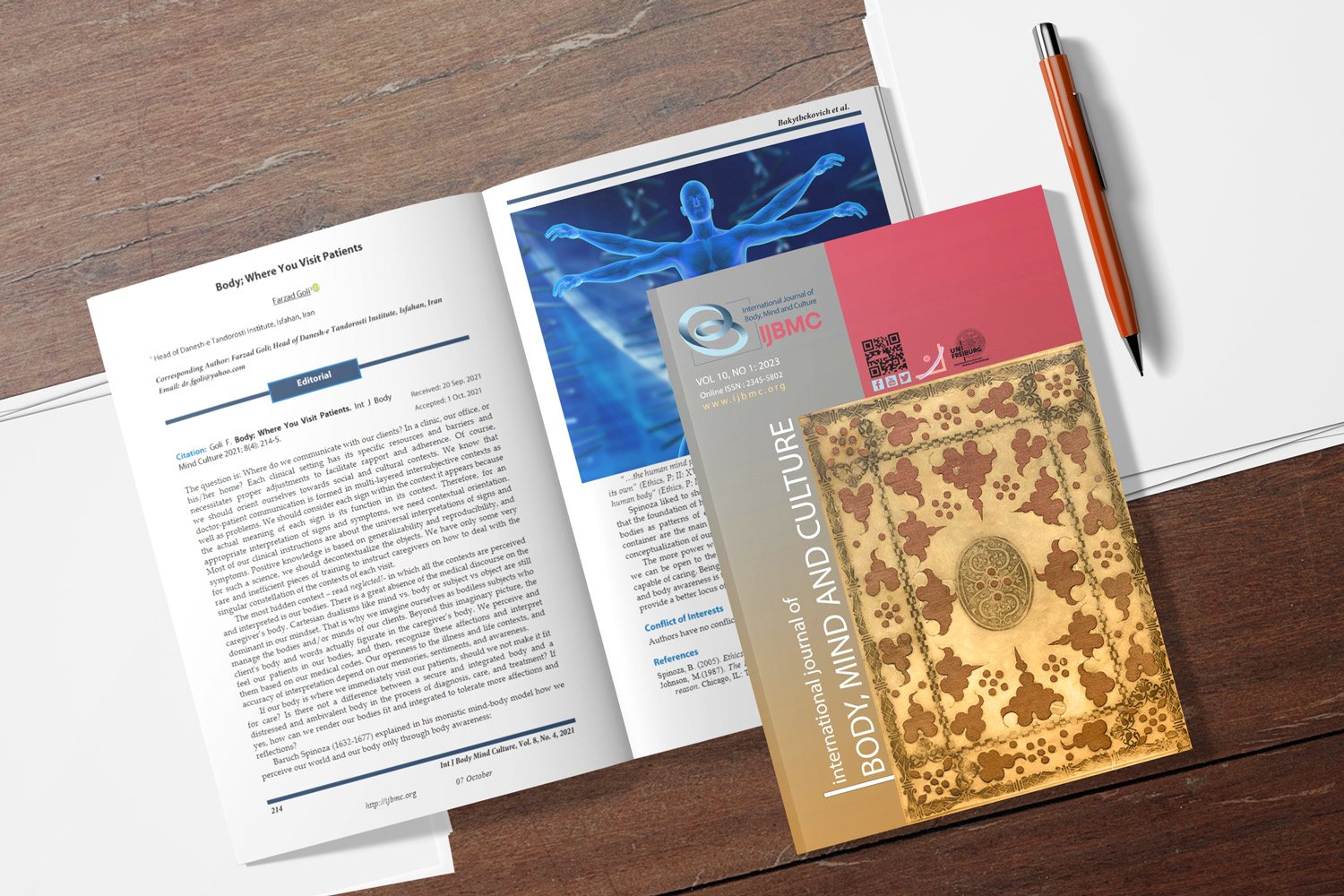The Effectiveness of Improving Body Awareness Skills on Anxiety, Depression, and Quality of Life in Patients after Cardiac Surgery
Downloads
Background: Anxiety and depression are prevalent in patients who have undergone cardiac surgery, both of which affect the quality of life (QOL). Undesirable QOL is associated with the exacerbation of disease severity. This study was conducted with the aim to assess the effect of body awareness improvement on QOL, anxiety, and depression among patients after cardiac surgery.
Methods: This randomized, clinical trial was performed with intervention and control groups (two groups with three measurements). All patients who had undergone cardiac surgery in hospitals in Qazvin, Iran, during 2018-2019 comprised the statistical population of this study. After convenience sampling (50 patients with cardiac disease at least 1 month after their surgery), patients were randomly assigned to experimental and control groups (25 individuals each). The measurement tools used were the Depression, Anxiety, Stress Scales (DASS-42) and MacNew QOL Questionnaire. Body awareness training was implemented twice a week for 6 weeks. Data were analyzed using analysis of variance (ANOVA) in SPSS software.
Results: The study results showed that improving body awareness can reduce anxiety and depression, and enhance QOL significantly in patients after cardiac surgery (P < 0.01).
Conclusion: The results showed that improving body awareness can effectively reduce anxiety and depression and enhance QOL in patients after cardiac surgery.
Downloads
Alipor, A., Aliakbari Dehkordi, M., Hasanzadeh Pashang, S, Faraji, R. (2016). The Effect of Emotional Intelligence Training on Mental Health of the Patients Hospitalized in Cardiology Department of Shahid Modares Hospital, Tehran, Iran. Shafay Khatam, 4(3), 47-32.
Bastani, F., Hidarnia, A., Kazemnejad, A., Vafaei, M., & Kashanian, M. (2005). A randomized controlled trial of the effects of applied relaxation training on reducing anxiety and perceived stress in pregnant women. J Midwifery Womens.Health, 50(4), e36-e40. doi:S1526952304005495 [pii];10.1016/j.jmwh.2004.11.008 [doi]. Retrieved from PM:15973255
Bhupathy, P., Haines, C. D., & Leinwand, L. A. (2010). Influence of sex hormones and phytoestrogens on heart disease in men and women. Womens.Health (Lond.), 6(1), 77-95. doi:10.2217/whe.09.80 [doi]. Retrieved from PM:20088732
Bohlmeijer, E., Prenger, R., Taal, E., & Cuijpers, P. (2010). The effects of mindfulness-based stress reduction therapy on mental health of adults with a chronic medical disease: a meta-analysis. J Psychosom.Res, 68(6), 539-544. doi:S0022-3999(09)00415-2 [pii];10.1016/j.jpsychores.2009.10.005 [doi]. Retrieved from PM:20488270
Catalan-Matamoros, D., Helvik-Skjaerven, L., Labajos-Manzanares, M. T., Martinez-de-Salazar-Arboleas, A., & Sanchez-Guerrero, E. (2011). A pilot study on the effect of Basic Body Awareness Therapy in patients with eating disorders: a randomized controlled trial. Clin Rehabil, 25(7), 617-626. doi:0269215510394223 [pii];10.1177/0269215510394223 [doi]. Retrieved from PM:21402650
Davidson, RJ. (2003). Meditation Helps with Anxiety and General Health. 7 February 2003. https://www.healthyplace.com/anxiety-panic/articles/meditation-helps-with-anxiety-and-general-health
Gard, G. (2005). Body awareness therapy for patients with fibromyalgia and chronic pain. Disabil Rehabil, 27(12), 725-728. doi:V811326328656363 [pii];10.1080/09638280400009071 [doi]. Retrieved from PM:16012065
Ghielen, I., van den Heuvel, O. A., de Goede, C. J., Houniet-de, G. M., Collette, E. H., Burgers-Bots, I. A. et al. (2015). BEWARE: Body awareness training in the treatment of wearing-off related anxiety in patients with Parkinson's disease: study protocol for a randomized controlled trial. Trials., 16, 283. doi:10.1186/s13063-015-0804-0 [doi];10.1186/s13063-015-0804-0 [pii]. Retrieved from PM:26101038
Hadaegh, F., Harati, H., Ghanbarian, A., & Azizi, F. (2009). Prevalence of coronary heart disease among Tehran adults: Tehran Lipid and Glucose Study. East.Mediterr.Health J, 15(1), 157-166. Retrieved from PM:19469439
Hatmi, Z. N., Tahvildari, S., Gafarzadeh, M. A., & Sabouri, K. A. (2007). Prevalence of coronary artery disease risk factors in Iran: a population based survey. BMC.Cardiovasc.Disord., 7, 32. doi:1471-2261-7-32 [pii];10.1186/1471-2261-7-32 [doi]. Retrieved from PM:17971195
Havik, O. E., Sivertsen, B., Relbo, A., Hellesvik, M., Grov, I., Geiran, O. et al. (2007). Depressive symptoms and all-cause mortality after heart transplantation. Transplantation., 84(1), 97-103. doi:10.1097/01.tp.0000268816.90672.a0 [doi];00007890-200707150-00018 [pii]. Retrieved from PM:17627244
Hofer, S., Benzer, W., Schussler, G., von, S. N., & Oldridge, N. B. (2003). Health-related quality of life in patients with coronary artery disease treated for angina: validity and reliability of German translations of two specific questionnaires. Qual.Life.Res, 12(2), 199-212. doi:10.1023/a:1022272620947 [doi]. Retrieved from PM:12639066
Homayoni, K., & Khosropanah, S. (2005). Principles of cardiac rehabilitation. Tehran, Iran: Entekhabe Roshan.
Hudetz, J. A., Hudetz, A. G., & Reddy, D. M. (2004). Effect of relaxation on working memory and the Bispectral Index of the EEG. Psychol Rep., 95(1), 53-70. doi:10.2466/pr0.95.1.53-70 [doi]. Retrieved from PM:15460358
Jafari, M., Yousefi, A. (2005). Standardization of Quality of Life Questionnaire for Cardiac Patients [MSc Thesis]. Isfahan, Iran: Isfahan (Khorasgan) Branch, Islamic Azad University.
Jarvinen, O., Saarinen, T., Julkunen, J., Huhtala, H., & Tarkka, M. R. (2003). Changes in health-related quality of life and functional capacity following coronary artery bypass graft surgery. Eur.J Cardiothorac.Surg., 24(5), 750-756. doi:S1010794003004135 [pii];10.1016/s1010-7940(03)00413-5 [doi]. Retrieved from PM:14583308
Juenger, J., Schellberg, D., Kraemer, S., Haunstetter, A., Zugck, C., Herzog, W. et al. (2002). Health related quality of life in patients with congestive heart failure: comparison with other chronic diseases and relation to functional variables. Heart, 87(3), 235-241. doi:10.1136/heart.87.3.235 [doi]. Retrieved from PM:11847161
Kaviani, H., Hatami, N., & Shafieabadi, A. E. (2009). The impact of mindfulness-based cognitive therapy on the quality of life in non-clinically depressed people. Adv Cogn Sci, 10(4), 39-48.
Kruger, J., Lee, C. D., Ainsworth, B. E., & Macera, C. A. (2008). Body size satisfaction and physical activity levels among men and women. Obesity.(Silver.Spring.), 16(8), 1976-1979. doi:oby2008311 [pii];10.1038/oby.2008.311 [doi]. Retrieved from PM:18551115
Lolak, S., Connors, G. L., Sheridan, M. J., & Wise, T. N. (2008). Effects of progressive muscle relaxation training on anxiety and depression in patients enrolled in an outpatient pulmonary rehabilitation program. Psychother.Psychosom., 77(2), 119-125. doi:000112889 [pii];10.1159/000112889 [doi]. Retrieved from PM:18230945
Mace, C. (2008). Mindfulness and mental health: Therapy, theory and science. New York, NY: Routledge/Taylor & Francis Group.
Mohhamad Aliha, J., Ghani dehkordi, F., Ganji, T., Hoseini, F. (2010). The effect of education on patient’s anxiety after myocardial infarction. Nursing Development in Health, 1(1), 65-75.
Mussgay, L., & Ruddel, H. (2004). Autonomic Dysfunctions in patients with anxiety throughout therapy. J Psychophysiol, 18(1), 27-37.
Nazemian, F., Ghafari, F., & Poorghaznein, T. (2008). Evaluation of depression and anxiety in hemodialysis patients. Med J Mashad Univ Med Sci, 51(3), 171-176.
Neff, K. D. (2003). Self-compassion: an alternative conceptualization of a healthy attitude toward oneself. Self Identity, 2(2), 85-101.
Park, J. E., & Park, K. (2002). Park's Textbook of Preventive and Social Medicine. Jabalpur, India: Banarsidas Bhanot.
Rahnavard, Z., Zolfaghari, M., Kazemnejad, A., & Hatamipour, K. (2006). An investigation of quality of life and factors affecting it in the patients with congestive heart failure. Hayat, 12(1), 77-86.
Roth, B., & Robbins, D. (2004). Mindfulness-based stress reduction and health-related quality of life: findings from a bilingual inner-city patient population. Psychosom.Med, 66(1), 113-123. doi:10.1097/01.psy.0000097337.00754.09 [doi]. Retrieved from PM:14747645
Sahebi, A., Asghari, M. J., & Salari, R. S. (2005). Validation of Depression Anxiety and Stress Scale (DASS-21) for an Iranian Population. Journal of Developmental Psychology, 1(4), 36-54.
Spiegel, D., Morrow, G. R., Classen, C., Raubertas, R., Stott, P. B., Mudaliar, N. et al. (1999). Group psychotherapy for recently diagnosed breast cancer patients: a multicenter feasibility study. Psychooncology., 8(6), 482-493. doi:10.1002/(SICI)1099-1611(199911/12)8:6<482::AID-PON402>3.0.CO;2-W [pii];10.1002/(sici)1099-1611(199911/12)8:6<482::aid-pon402>3.0.co;2-w [doi]. Retrieved from PM:10607981
The WHOQOL Group. (1996). What quality of life? The WHOQOL Group. World Health Organization Quality of Life Assessment. World.Health.Forum., 17(4), 354-356. Retrieved from PM:9060228
Valenti, L., Lim, L., Heller, R. F., & Knapp, J. (1996). An improved questionnaire for assessing quality of life after acute myocardial infarction. Qual.Life.Res., 5(1), 151-161. doi:10.1007/BF00435980 [doi]. Retrieved from PM:8901378
Copyright (c) 2020 Maryam Rahnamay Namin, Mohammad Reza Sharbafchi, Hamidreza Roohafza

This work is licensed under a Creative Commons Attribution-NonCommercial 4.0 International License.










